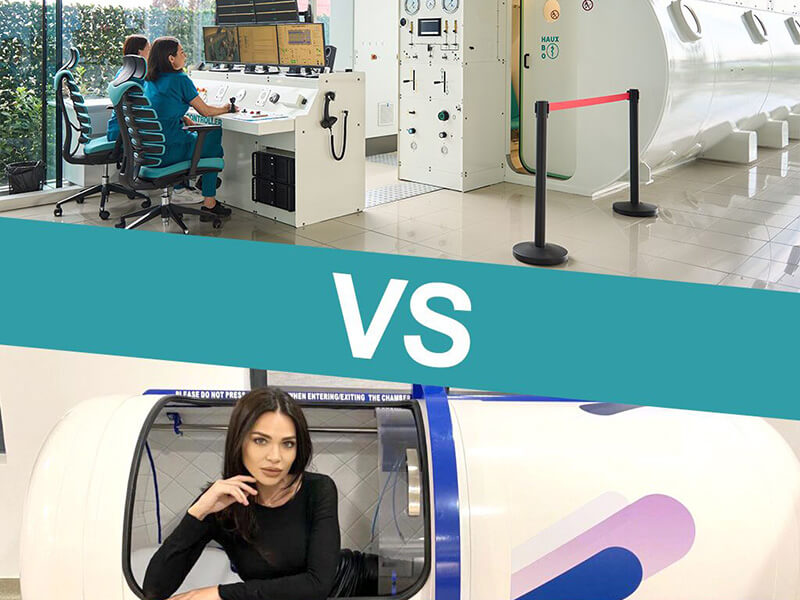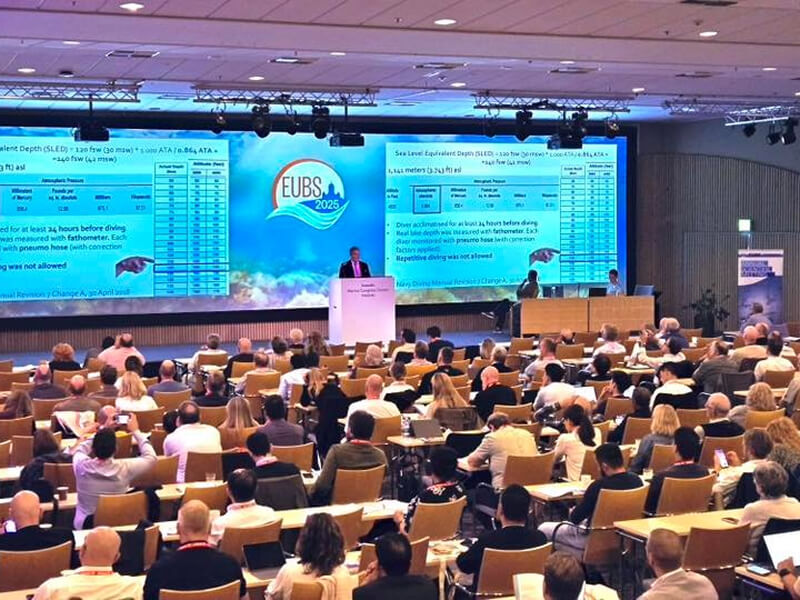
Article reviewed by: Dr. Sturz Ciprian, Dr. Tîlvescu Cătălin and Dr. Alina Vasile
Hyperbaric Therapy in Autism: A Revolutionary Approach to Child Development
Autism, a developmental disorder characterized by difficulties in communication, relationships and behavior, is an important concern for parents and health professionals.
Hyperbaric therapy is becoming increasingly attractive and frequently used by parents who want new solutions for their children affected by autism. By treating inflammation and brain damage, hyperbaric therapy works at the source of the problems, bringing encouraging results both in the scientific community and among the families of affected members of autism.
What is Autism?
Dr. Stephen Shore, an autism specialist and researcher, expressed the diversity of the condition very well: "if you know a person with autism, you only know one person with autism, not the whole spectrum." This idea illustrates well that autism is not a standard condition, but a number of different subtypes, influenced by various genetic and environmental factors.
Symptoms and challenges vary considerably from one individual to another, including difficulties in communication, both verbal and non-verbal, repetitive behaviors and social skills. It is important to note that autism does not necessarily affect intellectual abilities, given that 44 % of people with ASD have an average or even above average intellectual capacity.
Autism begins in early childhood, with most diagnoses made around the age of two, and is often accompanied by other medical conditions, such as gastrointestinal disorders, sleep disorders, seizures, and mental health problems, including attention deficit, anxiety and depression.
How is the Brain Affected by Autism?
The direct cause of autism spectrum disorders is unknown, although it is thought to be a combination of genetic and environmental factors that affect the brain. Recent research has discovered numerous differences in the brains of people with autism, from increased inflammation to an excess of synapses, or connections between brain cells.
Something is thought to influence the development of brain cells at some point in development, either before or after birth, which is still an open question. Autism affects various parts of the brain, including the cerebral cortex, amygdala, hippocampus, brainstem, basal ganglia, corpus callosum, and cerebellum.
Studies show that autism spectrum disorder affects the brain in a variety of different ways.
Signs and Symptoms of Autism
Autism spectrum disorders vary, and so do their symptoms. On the one hand, there are highly functional people who communicate relatively well, and on the other hand, there are people who cannot express themselves verbally at all. Symptoms may appear from birth, such as unresponsiveness to family or interactive play, or may appear later in development when the child becomes withdrawn or loses previously acquired language skills.
Signs of autism spectrum disorder (ASD) fall into two main categories: challenges in social communication and restricted or repetitive behaviors.
Challenges in Social Communication
- Difficulties in verbal language. Many individuals with autism are nonverbal.
- Trouble understanding conversational cues such as gestures, eye contact, facial expressions and tone of voice.
- Inability to recognize or show emotions.
- Feeling of being overwhelmed in social situations.
- Problems exchanging lines in a conversation. They can talk over the interlocutor.
- Problems in appreciating personal space.
Repetitive and Restrictive Behavior
- Repetitive body movements, such as rocking, spinning, walking.
- Obsessive focus on lights or rotating objects.
- Repetitive movements with objects, such as flipping switches or rotating objects.
- Ritualistic patterns – objects must be in a certain place or in a certain order.
- The need for a regular and strict routine, including things like meals, bedtime, specific clothes, etc.
Many people on the autism spectrum also have sensory problems, having an over- or under-sensitivity to certain stimuli, such as light, pain, sounds, tastes, smells, etc.
Early signs in infants and toddlers may include the absence of cooing or smiling, lack of interest in interactive play, inattention to hearing their name called, disturbance by loud noises, avoidance of eye contact, repetitive behaviors, and delayed development of language skills.
Current Treatment Options for Autism
Autism currently has no cure and no approved treatment for the symptoms and underlying causes of the condition. Current treatments focus on improving social interaction and increasing the level of independence of people with autism. Some behavioral treatments include Applied Behavior Analysis, the Denver Early Start Model, occupational therapy, Pivotal Response Treatment, Relationship Development Intervention, and talk therapy.
Medications can target specific symptoms, such as seizures, anxiety, depression, and hyperactivity. Risperidone was the first drug approved by the European Union for autism, and targets behavioral symptoms such as aggressive behavior and self-harm. Another approved drug is Aripriprazole which is prescribed for irritability.
Other alternative treatments with an adjunctive role include changes in diet, removal of heavy metals from the body or hyperbaric therapy.
What is Hyperbaric Therapy?
Hyperbaric Therapy (HBOT) involves exposing the patient to 100% pure oxygen, in an environment under a higher pressure than normal atmospheric pressure. In a hyperbaric environment, the blood absorbs a significant amount of oxygen, which can stimulate the process of healing and cell regeneration.
Initially, this therapy was used to treat medical conditions such as chronic wounds and carbon monoxide poisoning. However, recent studies show that it can also have significant benefits in the treatment of children with autism.
How Hyperbaric Therapy Can Help People with Autism
In autism, HBOT is thought to act on the nervous and immune systems. Oxygen given in the hyperbaric chamber can help lower the level of inflammation that is associated with autism symptoms. At the same time, it is considered that HBOT can improve the oxygenation of brain tissues, having a positive effect on cognitive functions.
A few preliminary studies suggest that hyperbaric therapy could have positive effects on people diagnosed with autism.
Recent Studies
Recently, several studies have appeared investigating the impact of Hyperbaric Therapy in treating autism. One of these was carried out and published in the prestigious "Journal of Autism and Developmental Disorders". It focused on the effects of HBOT on the communication and behavior of children with autism. Children who underwent hyperbaric therapy showed significant improvement in communication skills and behavior, according to the results of this study.
A significant decrease in repetitive behaviors and an increase in social interactions were also noted. These findings are extremely important and support the use of this type of therapy to improve social and behavioral aspects in children with autism.
In another study published in the journal "Pediatric Research", researchers analyzed the effects of Hyperbaric Therapy on cognitive functions and language development in children with autism.
According to the results, the children who underwent this study showed a significant increase in verbal development and improvement in cognitive functions.
The results of another study published by Dr. Daniel Rossignol, support the idea that this therapy may be helpful in reducing the severity of autism-related symptoms.
This research confirms the effectiveness of hyperbaric therapy in supporting the development of language and cognitive functions, highlighting its potential in treating crucial aspects of autism disorder.
Although there is still no general consensus in the academic world regarding the effectiveness of hyperbaric therapy for the relief of autism-specific symptoms, the following advantages appear in most studies:
- Improving Behavior: Reducing aggressive and repetitive behaviors.
- Neuroplasticity: Improving brain functioning.
- Inflammation and Immunity: Reducing inflammation and stimulating the immune system.
Although many studies to date have reported significant improvements in symptoms, further rigorous, controlled and long-term research is still needed to assess the true impact of therapy.
The Benefits of Hyperbaric Therapy in the Treatment of Autism
In a world where medical research is constantly evolving, Hyperbaric Therapy is becoming a promising option in treating children with autism. This therapeutic approach brings a number of significant benefits that can have a positive impact on the lives of children and their families, according to those who have opted for it.
1. Improving Communication and Social Interaction
Among the most commonly observed benefits are improved communication and social interaction skills. The children who also participated in hyperbaric therapy sessions, recorded improvements in expressing emotions, understanding non-verbal language and developing social relationships.
2. Reduction of Repetitive Behaviors
Another remarkable thing is related to the decrease in repetitive behaviors, common in the case of children with autism. Parents notice a reduction in stereotyped movements and other repetitive behaviors, which contributes to the improvement of the children's quality of life and the balance within the family.
3. Energy Level Increase
Often, children who have received hyperbaric therapy show an increase in energy levels. This increase in vitality can have a positive impact on participation in social, educational and recreational activities, thus contributing to an overall balanced development.
4. Stimulation of Verbal Development
HBOT can significantly influence the development of language and verbal skills. After undergoing hyperbaric therapy, parents noticed an increase in vocabulary, an improvement in pronunciation and more interest in verbal communication in their children.
5. Decreased Sensory Sensitivity
Many people with autism have heightened sensory sensitivity. HBOT can help reduce these sensitivities, making it easier for children to adapt to environmental stimuli and thus improving the quality of their daily lives.
6. Development of Cognitive Skills
Hyperbaric oxygen treatment can improve cognitive functions, including attention, concentration and memory. In the context of education and social interactions, these aspects are essential.
7. Reducing Stress Level
Families who have integrated HBOT into their treatment plan often see a reduction in stress levels for both children and parents. Clear progress brings a sense of hope and a sense of control over the child's development.
8. Support for the Immune System
An increased level of oxygen can help improve the functioning of the immune system. A strong immune system can have a beneficial impact on overall health and the body's ability to protect itself against external factors.
However, it is important to emphasize that the benefits of HBOT may differ from one child to another, and the results may depend on the severity of symptoms and the individual characteristics of each patient.
How Safe Is Hyperbaric Therapy?
We need to carefully address the safety of hyperbaric therapy in the treatment of autism, as it is a critical topic. Research and clinical observations so far have suggested that hyperbaric therapy may be generally safe, provided it is administered correctly and under adequate supervision.
Professional supervision is a key factor in ensuring the safety of hyperbaric therapy. This therapy should only be administered by qualified medical professionals experienced in the use of the hyperbaric chamber. They can assess the child's overall health, adjust pressure and oxygen levels as needed, and monitor any side effects.
So far, significant side effects reported from hyperbaric therapy are rare. Parents should discuss the potential risks and benefits of therapy thoroughly with their doctors before starting treatment.
Even though hyperbaric therapy is generally safe, it is important to approach it responsibly and include it in a personalized treatment plan.
To ensure that hyperbaric therapy is administered safely and beneficially to children with autism, we must have adequate supervision, perform prior medical evaluation, and communicate openly.
A Step Forward for Children with Autism
Hyperbaric therapy in autism is a rapidly developing field of research, and the first results are encouraging to say the least. Hyperbaric therapy could be an important step forward to develop and improve the quality of life of children affected by autism, but it is still important to have realistic expectations and understand that there is no magic solution or miracle cure for autism.
Hyperbaric oxygen treatment can be an effective alternative in a treatment plan, along with other therapeutic and medical interventions.




